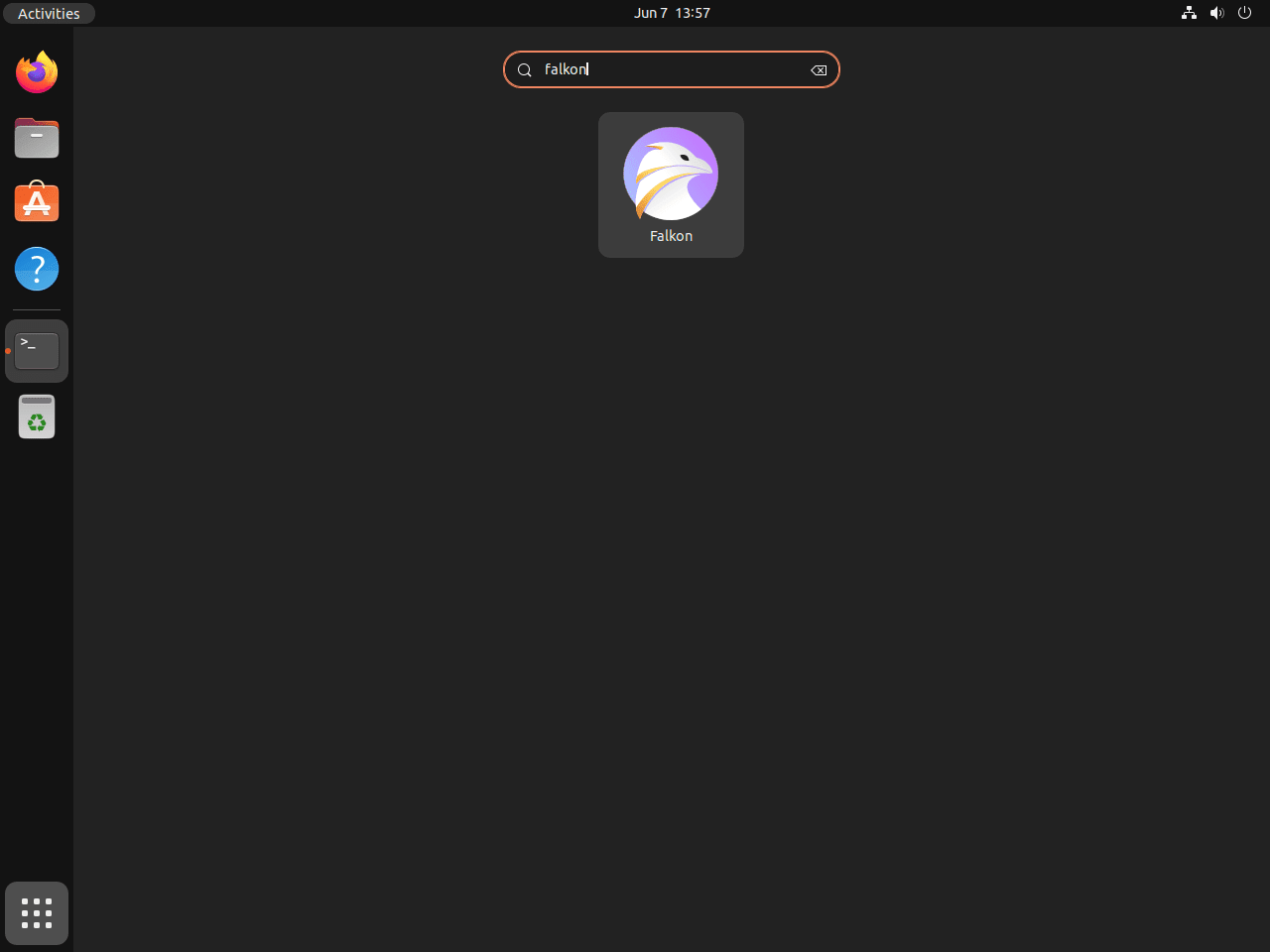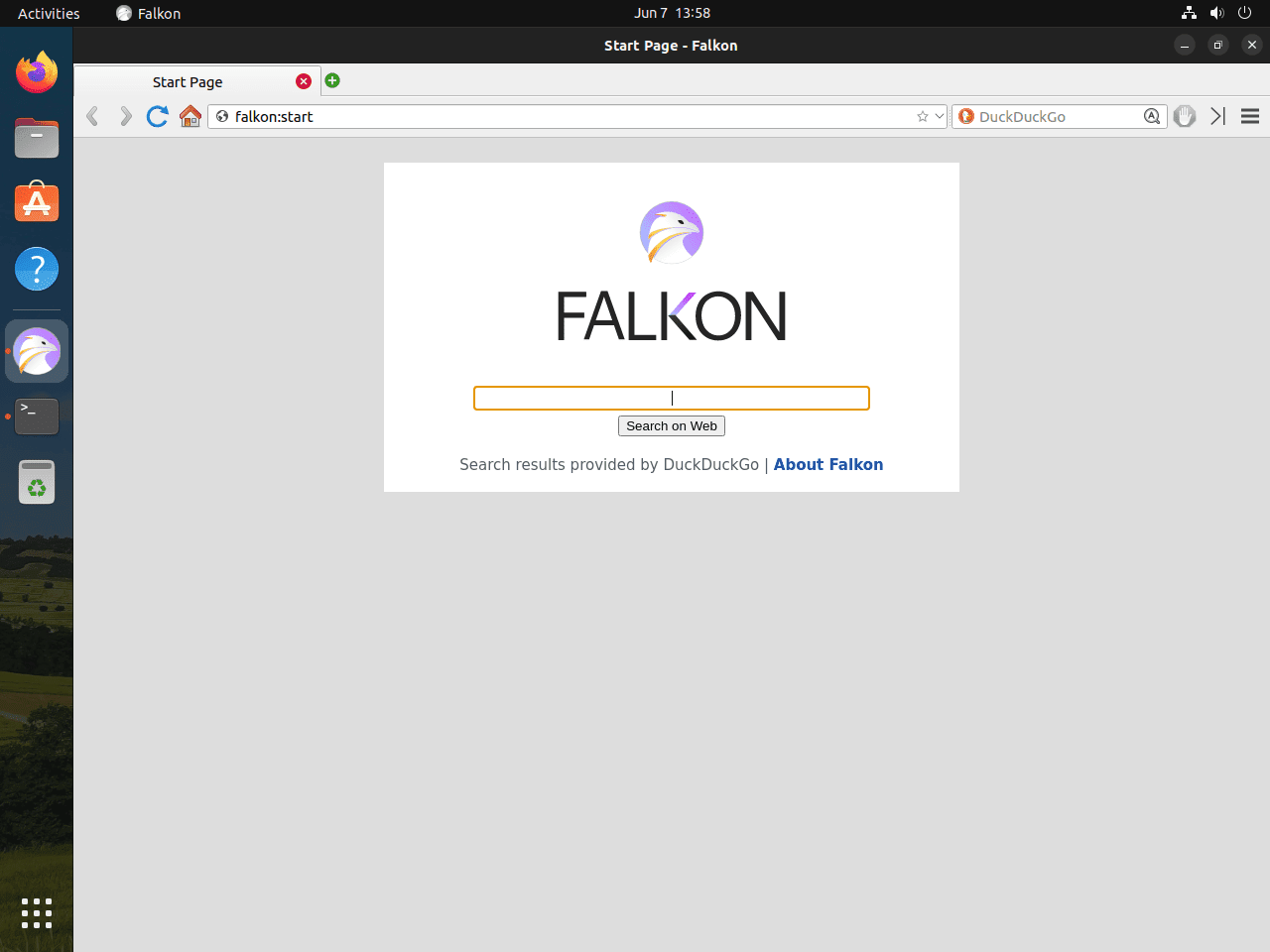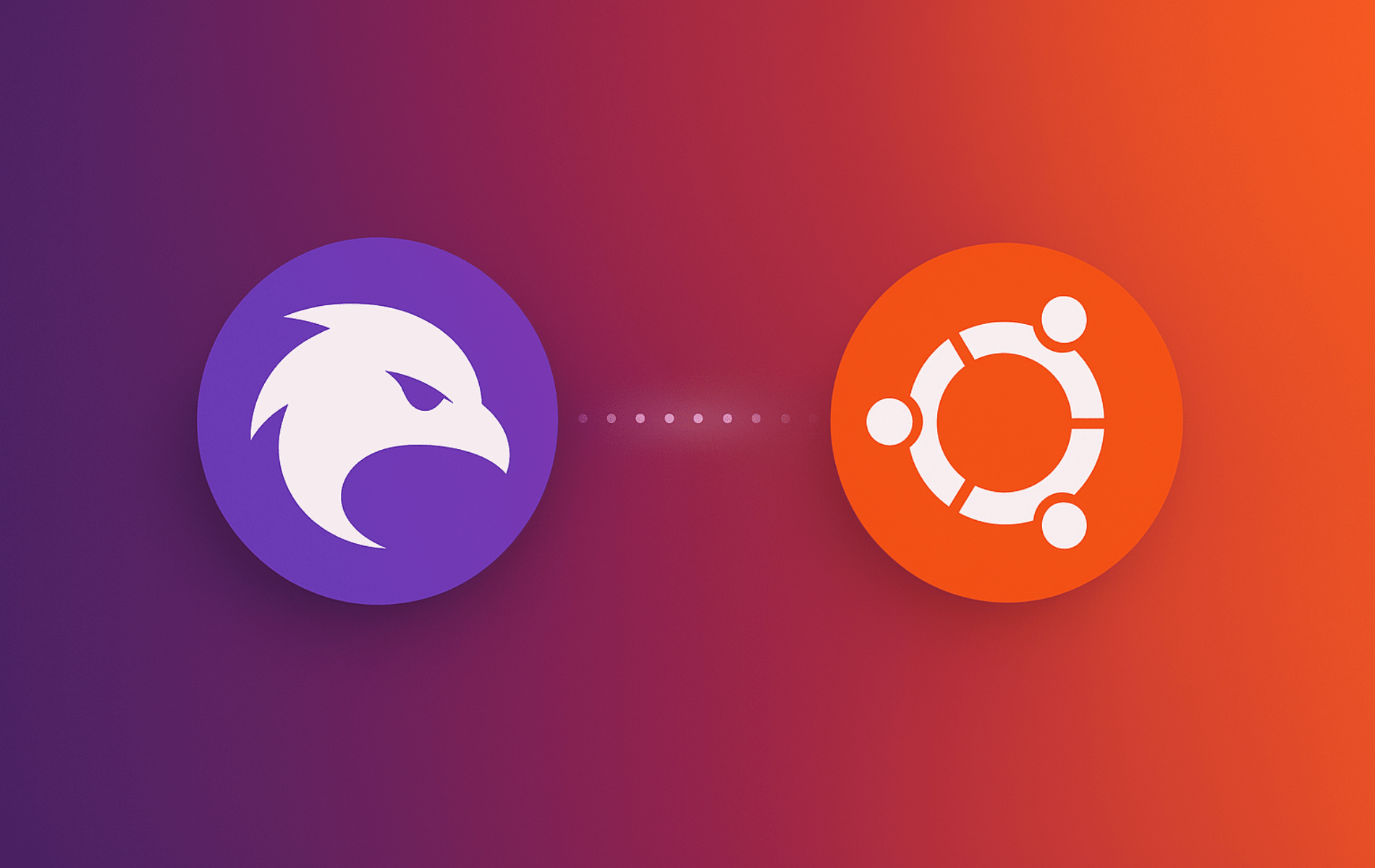Falkon is a lightweight Qt-based web browser that integrates seamlessly with KDE Plasma desktops while remaining fast enough for older hardware. Originally developed as QupZilla, it now ships with built-in AdBlock and tracker protection, bookmark and history sidebars, an RSS reader, and Click2Flash content blocking. Whether you run a minimal tiling window manager or a full Plasma desktop, Falkon adapts to your workflow without consuming excessive resources.
This guide covers three installation methods for Falkon on Ubuntu: APT from the default repositories, Snap packages with automatic updates, and Flatpak bundles from Flathub with application sandboxing. By the end, you will have Falkon installed and verified, know how to launch and update it, and understand how to remove it cleanly if you decide to switch browsers.
Choose Your Falkon Installation Method
Before installing, consider which method best fits your needs. Each approach offers different trade-offs between version freshness, disk usage, and system integration, so choose based on your priorities.
| Method | Channel | Stability | Best For |
|---|---|---|---|
| APT (Ubuntu Repository) | Ubuntu Repos | Very stable, tested integration | Users who prefer system-managed updates and minimal disk usage |
| Snap | Snap Store | Latest stable with auto-updates | Users who want automatic background updates |
| Flatpak (Flathub) | Flathub | Sandboxed, frequent updates | Users prioritizing application isolation and security |
For most users, the APT method is recommended because it integrates with Ubuntu’s standard update cycle, shares system libraries to save disk space, and receives security patches through the regular system update process. In contrast, Snap and Flatpak deliver newer upstream versions but consume more disk space through bundled dependencies.
Method 1: Install Falkon Browser via APT
APT installs Falkon from Ubuntu’s default universe repository, providing a stable version that shares your system’s Qt libraries. As a result, updates arrive through standard system maintenance.
Update System Packages
First, refresh your package index and upgrade existing packages to ensure APT has the latest repository information:
sudo apt update && sudo apt upgradeEnter your password when prompted. If updates are available, APT lists them and asks for confirmation. Press Y to proceed with the upgrades.
Install Falkon via APT
With your system updated, install Falkon from Ubuntu’s repositories:
sudo apt install falkonAPT resolves dependencies and displays the packages to install. Press Y to confirm. After confirmation, APT downloads and installs Falkon along with its required Qt WebEngine libraries.
Verify APT Installation
Once installation completes, verify that Falkon is correctly installed by checking the package status:
dpkg -l falkon | tail -1Expected output confirming successful installation:
ii falkon 24.01.75-1build3 amd64 lightweight web browser based on Qt WebEngine
The ii status confirms the package is installed and configured correctly. Note that the version number varies depending on your Ubuntu release.
Method 2: Install Falkon Browser via Snap
Snap packages bundle all dependencies and update automatically in the background. As a result, this method provides a newer Falkon version than the default repositories while keeping the browser isolated from system libraries.
Verify Snapd Installation
Ubuntu includes Snap by default on standard desktop installations. However, minimal or server installations may lack it. To ensure the Snap daemon is available, run the following command:
sudo apt install snapd -yIf Snapd is already present, APT confirms the package is current. Otherwise, APT installs and enables the Snap service automatically.
Install Falkon via Snap
With Snapd ready, install Falkon from the Snap Store:
sudo snap install falkonVerify Snap Installation
Next, confirm the Snap installation succeeded by listing installed Snap packages:
snap list falkonExpected output showing Falkon is installed:
Name Version Rev Tracking Publisher Notes falkon 3.2.0 182 latest/stable nicofee -
Method 3: Install Falkon Browser via Flatpak and Flathub
Flatpak provides application sandboxing with fine-grained permission controls. Additionally, the Flathub version of Falkon is maintained by KDE and typically offers the newest stable release.
Flatpak is not pre-installed on Ubuntu. If you have not set it up yet, follow our Flatpak installation guide for Ubuntu to install the Flatpak framework and add the Flathub repository before continuing.
Enable Flathub Repository
If you have not already added Flathub as a remote, run the following command to enable it system-wide:
sudo flatpak remote-add --if-not-exists flathub https://flathub.org/repo/flathub.flatpakrepoThe --if-not-exists flag prevents errors if Flathub is already configured. You only need to run this step once per system.
Install Falkon via Flatpak
Next, install Falkon from Flathub at system scope so all users can access it:
sudo flatpak install flathub org.kde.falkon -yFlatpak downloads Falkon and any required KDE runtimes. Depending on your connection speed, the download may take several minutes.
Verify Flatpak Installation
Once installation completes, verify that Falkon is correctly installed:
flatpak info org.kde.falkonExpected output showing installation details:
Falkon - Web Browser
ID: org.kde.falkon
Ref: app/org.kde.falkon/x86_64/stable
Arch: x86_64
Branch: stable
Origin: flathub
Version: 25.12.0
Launch Falkon Browser
Once Falkon is installed, you can launch it from the terminal or the graphical application menu depending on your preference.
Launch from Terminal
The terminal command varies depending on how you installed Falkon. Therefore, use the command that matches your installation method:
APT or Snap installation:
falkonFlatpak installation:
flatpak run org.kde.falkonBoth Snap and APT installations add Falkon to your system PATH. As a result, you can launch it with the simple falkon command.
Launch from Applications Menu
To launch Falkon graphically, open your desktop’s application menu, search for Falkon, and select it from the results. Alternatively, you can find Falkon in the Applications menu under the Internet category.


Manage Falkon Browser
This section covers keeping Falkon updated and removing it when no longer needed. Use the commands that match your installation method for each task.
Update Falkon Browser
Regular updates ensure you have the latest security patches and features. Choose the update process that matches your installation method.
Update APT Installation
For APT installations, Falkon updates arrive through the standard system update process. To check for and apply updates specifically for Falkon, run:
sudo apt update
sudo apt install --only-upgrade falkonUpdate Snap Installation
Snap packages update automatically in the background by default. However, to manually trigger an update, run:
sudo snap refresh falkonUpdate Flatpak Installation
For Flatpak installations, update Falkon and its runtimes with the following command:
sudo flatpak update org.kde.falkonRemove Falkon Browser
If you decide to remove Falkon, use the commands that match your original installation method. Complete removal requires cleaning up orphaned dependencies as well.
Remove APT Installation
To remove Falkon and its configuration files, run the following commands to clean up unused dependencies:
sudo apt remove --purge falkon
sudo apt autoremoveThe autoremove command removes Qt libraries and other packages that APT installed as dependencies but that no other application requires.
Remove Snap Installation
To remove the Falkon Snap package, run the following command:
sudo snap remove falkonSnap cleans up bundled dependencies automatically when you remove the package.
Remove Flatpak Installation
To remove the Falkon Flatpak and clean up unused runtimes, run these commands:
sudo flatpak uninstall org.kde.falkon
sudo flatpak uninstall --unusedThe second command removes any KDE runtimes that only Falkon used. Consequently, no other Flatpak application needs them.
Falkon stores user data in
~/.config/falkon/(APT/Snap) or~/.var/app/org.kde.falkon/(Flatpak). These directories contain your bookmarks, history, and settings. The removal commands above do not delete user data, so you can back it up before removal or delete it manually withrm -rf ~/.config/falkon/if you want a clean slate.
Conclusion
Falkon provides a lightweight browsing experience with built-in privacy features through three installation methods: APT for system integration, Snap for automatic updates, and Flatpak for sandboxed isolation. Because AdBlock and tracker protection are enabled by default, Falkon offers a clean browsing experience without requiring additional extensions. For more information about Falkon’s features and development, visit the official Falkon website.

